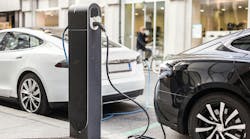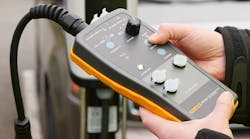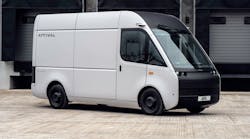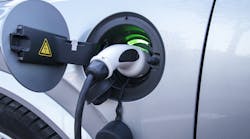Tesla and Porsche have each developed multi-gear electric vehicles (EVs). If these models prove successful, how can other manufacturers follow suit while also keeping their production lines optimized and cost-effective?
Here, Claudia Jarrett, US country manager of industrial parts supplier EU Automation, explains the benefits of two-speed gearboxes, and how these will change manufacturing processes.
EVs don’t need transmissions—or do they? The conventional thought is that, because they don’t need a clutch, electric cars don’t require gears. So, unlike conventional petrol or diesel cars with multi-speed gearboxes, EVs have just one gear.
However, this view is changing as leading EV manufacturers, like Porsche and Tesla, unveil multi-gear designs. Tesla’s Dual-motor Model S, Model X, and Model 3 vehicles each have two gears, one in the front and one in the rear; Porsche’s Taycan also has a two-speed gearbox, and Volkswagen and Volvo are following suit.
So, manufacturers must prepare themselves for a future where EVs do, in fact, have multiple gears—but, what are the advantages of multiple gear ratios in EVs? There are several relating to the fact that EVs produce a much higher ratio of torque, measured as revolutions per minute (RPM).
Of course, internal combustion engines (ICEs) only produce power and efficiency in relatively narrow RPM ranges. That’s why they have gears, to switch mechanically from one tight RPM range to the next without damaging the engine. With fewer moving parts than conventional ICEs, electric engines can go beyond 10,000 RPM—some even approach 20,000 RPM at top speed—without risks of damage.
However, one-gear EVs do have a performance weakness relating to the torque-to-RPM ratio: efficiency is not consistent across the whole range of RPMs—from zero to 10,000 RPM, for example. EVs only produce full torque up until a certain speed, after which the levels start to drop off.
According to this report by Clean Technica, the torque “sweet spot” for EVs is usually around 48 to 65 kilometers per hour.
That’s why Tesla and Porsche have embraced the idea that EVs should have a lower gear for initial acceleration and a higher gear for top speeds. This can ensure maximum efficiency throughout the range of RPMs.
Better Machining
The advent of multi-gear EVs presents challenges for manufacturers of transmission components, which adapt the levels of torque produced by the engine to the drive wheels. The higher rate of RPMs in EVs places higher demands on the transmission, which makes it increasingly difficult to manufacture adequate transmission parts with conventional machining methods. EV transmissions also mainly use smaller, lighter planetary gear designs to reduce weight and space.
Manufacturers will need to adapt their production processes to make these smaller, higher-quality transmission components—at all levels. At the machining level, for instance, hard-part turning (HPT) can be applied. HPT has overtaken grinding as a more accurate and efficient method for machining hardened steels, like 45-70 HRC superalloys—and it has been found to reduce machining time and costs by 70%.
Power-skiving is another method that combines shaping and hobbing—a machining process for gear cutting—has also been attracting interest as a more efficient and precise method for machining internal gears.
Transmission makers can adapt to these changes by investing in new machinery, and advanced tooling that’s fit for purpose. But, as in any case where machine shops must adapt to market changes—especially those requiring big investments—production planning must be a priority. The last thing they need is to be hindered by problems arising from poor coordination between different parts of the production line.
Issues of fragmented production planning are typically down to disjointed IT systems. That’s why more transparent production planning, better data management, and condition monitoring through sensors and the IIoT will be so critical.
Eyes Everywhere
Manufacturers of transmission components should look at how automakers including Bosch, BMW, and others have adapted to change. Bosch’s automotive diesel system factory in Wuxi, China, faced a significant increase in customer orders caused by changes in Chinese regulations relating to emission control and loading.
The Wuxi plant’s solution was to combine the IIoT with Big Data, connecting its machinery to better monitor overall production using sensors embedded into the factory’s machines.
The sensors collect data on the machines’ conditions and cycle times with advanced, real-time analytics. With its new, digitalized approach to production planning, Bosch can schedule maintenance operations before any failures occur and keep its machinery running and operating for longer. Bosch has reported a more than 10% output increase in some areas, with improved delivery and customer satisfaction.
The advantages of Industry 4.0 can tie directly back to machining.
Take the example of two automotive plants in Austria, one run by BMW and the other by Opel, which each produce all major parts of the engine through drilling, milling, and turning operations. Both plants applied SKF condition monitoring systems across their processes and, in doing so, we're able to run their tooling operations at far-higher speeds—up to 24,000 RPM in some cases—with increased automation and minimal production stoppages.
These are among the advantages that manufacturers of transmission components can unlock by embracing Industry 4.0. However, many are reluctant to do because of misconceptions that digitalization will be expensive or incompatible with their lines when, actually, it needn’t be.
Rather, applying the latest specialist technologies, like sensors, can be achieved as part of a low-cost digital retrofitting strategy.
This is where the consultancy of an expert industrial automation parts supplier can lend a hand.
Through sensors and the IIoT, plus a solid retrofitting strategy, manufacturers of transmission parts can apply more transparent production planning and better data management across their production lines. Then, keeping up with the EV changes led by Tesla and Porsche shouldn’t seem so daunting, after all.















